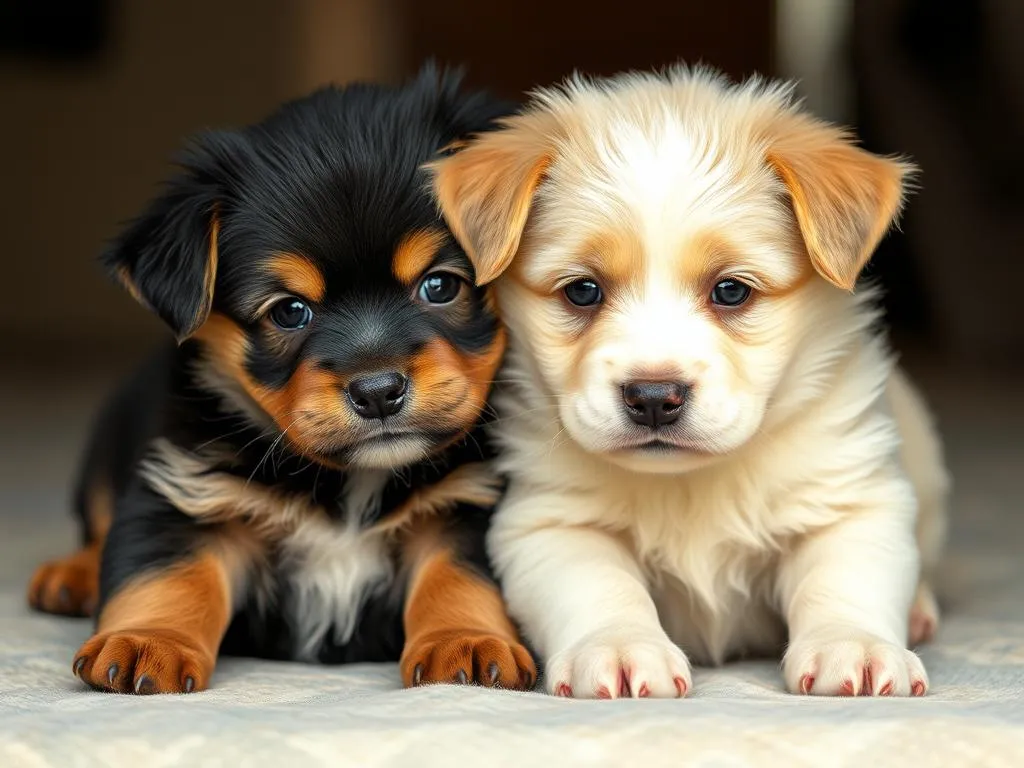
Puppies have a universal appeal that can make even the coldest hearts melt. Their innocent eyes, floppy ears, and playful antics ignite a sense of joy and warmth in everyone they encounter. But why do we find puppies so irresistibly cute? Understanding the factors behind their cuteness can enhance our appreciation for these furry companions, whether you’re a seasoned dog owner or considering adopting your first puppy.
The Science of Cuteness
Definition of Cuteness
Cuteness is more than just a subjective opinion; it has a defined set of characteristics. Typically, cuteness is associated with features like large eyes, round faces, and small bodies. These traits evoke a nurturing response in humans, triggering physiological reactions such as the release of oxytocin, the “love hormone.” This hormonal reaction not only makes us feel good but also compels us to care for and protect creatures we perceive as cute.
Evolutionary Perspective
From an evolutionary standpoint, cuteness serves a critical role in the survival of species. The concept of neoteny—the retention of juvenile traits in adults—plays a significant role in why puppies are so cute. Puppies exhibit many neotenous traits, such as their small size and playful demeanor, which can evoke a caregiving response from humans. This response is crucial for survival, as it ensures that the young receive the care and protection they need during their vulnerable stages of development.
The Role of Features
The physical traits that contribute to cuteness are well-documented. Puppies often have large, expressive eyes, a small snout, and soft, fluffy fur. These features not only elicit a nurturing instinct in humans but also make them visually appealing. The large eyes, in particular, create a perception of innocence and vulnerability, further intensifying their cuteness factor. When we see a puppy, our brains are wired to respond, leading to feelings of warmth and affection.
Behavioral Traits of Puppies
Playfulness and Energy
One of the most endearing qualities of puppies is their boundless energy and playful behavior. Their playful antics—like chasing their tails, pouncing on toys, or frolicking around—can bring a smile to anyone’s face. This exuberance not only showcases their youthful spirit but also reinforces their cuteness. Puppies often engage in play-fighting, bounding around with their siblings, or even attempting to “help” with household chores, which can be both amusing and adorable.
Affectionate Nature
Puppies are known for their affectionate nature, often showering their owners with love and attention. They express affection through cuddles, playful nudges, and wagging tails. This display of affection has a profound impact on human emotions, creating a strong bond between the two. Studies have shown that interacting with puppies can increase levels of serotonin and dopamine in the brain, improving mood and overall happiness. Anecdotes abound of people feeling an immediate connection to their puppies upon first meeting them, exemplifying the emotional pull these adorable creatures have.
Curiosity and Exploration
The inquisitive nature of puppies adds another layer of charm to their personalities. Their exploration behaviors—sniffing around new environments, investigating intriguing sounds, or discovering hidden corners—are not only entertaining to watch but also endearing. This curiosity often leads to comical situations, like a puppy getting stuck in a cardboard box or playfully tumbling over their own feet, making them all the more lovable.
Cultural Perspectives on Puppy Cuteness
Media Representation
Puppies have a prominent place in media, from heartwarming films to social media platforms filled with viral puppy videos. Their portrayal in movies often highlights their cuteness, reinforcing their status as beloved companions. Advertisements featuring puppies selling products ranging from food to toys tap into our emotional responses, making us more likely to engage with the content. Viral puppy videos and memes have become a staple in online culture, showcasing their antics and endearing behaviors to millions of viewers worldwide.
Symbolism in Culture
Across various cultures, puppies symbolize loyalty, joy, and companionship. They are often depicted in folklore and literature as loyal friends and guardians, emphasizing their role in human lives. In many societies, puppies are seen as a bridge to happiness and emotional fulfillment, reinforcing the idea that their cuteness transcends mere aesthetics. This cultural significance contributes to the overall perception of puppies as not just cute but as meaningful companions.
Puppy Adoption Trends
The correlation between perceived cuteness and puppy adoption trends cannot be ignored. The rise in puppy adoptions has been fueled by social media, where cute puppy photos and videos circulate widely. Many organizations promote puppy adoption by highlighting their adorable features, encouraging people to bring these loving animals into their homes. As a result, more families are choosing to adopt puppies, eager to experience the joy and companionship they offer.
The Psychological Impact of Puppy Cuteness
Emotional Benefits
The emotional benefits of owning a puppy are well-documented. Interacting with puppies can significantly reduce stress and anxiety levels, leading to increased feelings of happiness and contentment. Studies have shown that pet owners often experience lower blood pressure and a decreased risk of depression. The cuteness of puppies enhances these emotional benefits, as their playful nature and affectionate behaviors create a positive atmosphere in the home.
Cuteness and Human Behavior
Puppy cuteness also influences human behavior in numerous ways. The phenomenon known as “puppy dog eyes”—when a puppy looks up at you with big, pleading eyes—can evoke feelings of empathy and compassion, often leading to impulsive decisions, such as giving treats or adopting a puppy. This reaction is rooted in our evolutionary background, where nurturing behaviors were essential for survival. The cuteness of puppies can sway our decisions, making us more likely to engage in behaviors that support their well-being.
The Role of Cuteness in Training and Socialization
A puppy’s cuteness can be a valuable asset in training and socialization. Their adorable appearance often encourages people to approach and interact with them, providing opportunities for socialization that are crucial for their development. Additionally, using cuteness to reinforce positive behaviors during training can lead to more successful outcomes. For instance, rewarding a puppy’s good behavior with praise or treats can create positive associations, making training sessions more enjoyable for both the puppy and the owner.
Caring for Your Cute Puppy
Choosing the Right Puppy
When selecting a puppy, it’s essential to consider not only the breed’s cuteness but also how well it fits your lifestyle. While some breeds might be more visually appealing, temperament and energy levels are equally important. Research different breeds to find one that matches your activity level, family dynamics, and living situation. A cute puppy can turn into a challenge if their needs aren’t met, so balance cuteness with practicality.
Health and Nutrition
Maintaining a puppy’s cuteness goes beyond appearance; it involves proper care and nutrition. Ensure your puppy is receiving a balanced diet tailored to their age, size, and breed. Regular vet check-ups are crucial for preventing health issues and keeping your puppy in top shape. Grooming should also be a part of your routine, as clean, well-groomed puppies not only look cuter but are healthier as well.
Training Tips for a Cute Puppy
Training a puppy requires patience and consistency, but there are ways to leverage their cuteness to your advantage. Focus on positive reinforcement techniques, rewarding desired behaviors with treats and praise. Socialization is also crucial—expose your puppy to various environments, people, and other animals to help them become well-adjusted adults. Engaging in fun training exercises can also strengthen your bond, making the process enjoyable for both of you.
Conclusion
Puppies are undeniably cute, and the reasons behind their cuteness are multifaceted, encompassing scientific, behavioral, cultural, and psychological dimensions. Their appearance and playful nature elicit nurturing instincts, while their affectionate behaviors create emotional connections with their human companions. Understanding why puppies are so cute not only enhances our appreciation for these animals but also highlights the broader implications of human-animal relationships.
As you consider the joy a puppy can bring into your life, remember that their cuteness is one of many reasons why they make such wonderful companions. Embrace the cuteness, and you’ll find that puppies bring an abundance of love and joy into your home, making the world just a little bit brighter.









